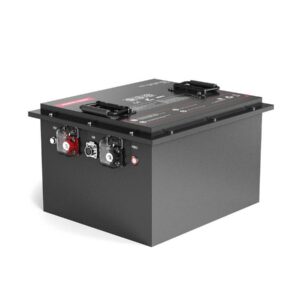
Which 12v battery lasts longest?
The longest-lasting 12V batteries are lithium iron phosphate (LiFePO4) models, offering 2,000–5,000 cycles at 80% depth of discharge (DoD). Brands like Battle Born or Renogy outperform lead-acid (300–500 cycles) due to stable voltage curves and temperature resilience. Pro Tip: Avoid deep discharges below 50% DoD for lead-acid AGM/gel batteries—their lifespan halves with each 10% over-discharge.
Best Lithium Car Batteries for Cold Cranking Amps
What factors determine 12V battery lifespan?
Key factors include chemistry, depth of discharge, and operating temperature. LiFePO4 tolerates -20°C–60°C with minimal degradation, while lead-acid loses 60% capacity at -18°C. Partial discharges (20–30% DoD) extend lifespan versus full cycles.

Beyond chemistry, charge/discharge rates matter. Drawing 1C (full capacity in 1 hour) strains lead-acid, reducing cycles by 30%. LiFePO4 handles 1C sustained with <2% capacity loss/year. For example, a 100Ah AGM battery cycled to 50% DoD daily lasts ~1.5 years, while LiFePO4 lasts 8–10 years. Pro Tip: Use temperature-compensated chargers—lead-acid needs +0.03V/°C adjustment below 25°C. Why does temperature matter? Heat accelerates sulfation in lead-acid, while cold increases internal resistance, cutting usable capacity.
How does LiFePO4 outperform lead-acid in longevity?
LiFePO4’s crystalline structure resists degradation, enabling 5–10x more cycles than lead-acid. It maintains >80% capacity after 3,000 cycles vs. AGM’s 500 cycles at 50% DoD.
Lithium’s flat discharge curve (13.2V–12.8V under load) reduces voltage sag, letting devices run longer per charge. Lead-acid drops from 12.7V to 11.8V at 50% DoD, triggering low-voltage cutoffs prematurely. A 100Ah LiFePO4 delivers ~90Ah usable energy (90% DoD), while AGM provides ~40Ah (40% DoD). Practically speaking, this means an RV fridge running 48 hours on LiFePO4 vs. 20 hours on AGM. Pro Tip: Pair LiFePO4 with a low-temp charge disconnect (<0°C) to prevent plating damage. But what if you’re on a budget? AGM works for low-cycle applications (<200 cycles/year) but requires meticulous voltage monitoring.
| Metric | LiFePO4 | AGM |
|---|---|---|
| Cycle Life | 2,000–5,000 | 300–500 |
| DoD Limit | 80–90% | 40–50% |
| Efficiency | 95–98% | 80–85% |
What are the top-rated 12V LiFePO4 batteries?
Battle Born 100Ah and Renogy 12V 100Ah lead in cycle life (3,000–5,000 cycles) and warranty (10 years). Dakota Lithium offers -20°C operation with built-in heaters, while SOK provides user-replaceable cells.
Battle Born uses automotive-grade cells with 3,000–5,000 cycles at 100% DoD, backed by a 10-year warranty. Renogy’s Smart Lithium series includes Bluetooth monitoring—critical for tracking cell balancing. For marine use, Dakota Lithium’s IP67-rated 12V 100Ah handles saltwater spray, whereas SOK’s modular design allows in-field repairs. Pro Tip: Prioritize batteries with UL1973 certification—it ensures rigorous safety testing. What about cost? Expect $900–$1,500 for premium 100Ah LiFePO4 vs. $250–$400 for AGM, but lithium’s 10-year lifespan offers 60% lower TCO.
How to Safely Dispose of and Recycle Car Batteries
How does temperature affect 12V battery lifespan?
High heat (>30°C) accelerates chemical degradation, while cold (<0°C) reduces capacity. LiFePO4 loses 3% capacity/year at 25°C vs. 20% for AGM. Below freezing, AGM capacity drops 30–40% temporarily.
At 35°C, lead-acid sulfation doubles, slashing lifespan by 50%. LiFePO4’s boron-doped anodes resist thermal breakdown up to 60°C. In contrast, AGM batteries in engine compartments (50°C+) last just 6–12 months. For example, an RV battery bank in Arizona may hit 3,000 cycles with LiFePO4 vs. 400 cycles with AGM. Pro Tip: Install batteries in climate-controlled compartments—every 8°C above 25°C halves lead-acid life. Why risk it? Thermal runaway in lithium is rare but possible with damaged cells; always use a BMS with temperature cutoff.
Can AGM batteries match LiFePO4 lifespan with proper care?
No—even with ideal maintenance, AGM caps at 600 cycles (50% DoD). LiFePO4 achieves 2,000+ cycles under the same conditions. AGM requires monthly equalization charges and strict 50% DoD limits.
AGM’s lead dioxide plates degrade with each cycle, losing active material. LiFePO4’s olivine structure remains intact, enabling 80% capacity after 3,000 cycles. If you discharge AGM to 70% DoD daily, lifespan plummets to 200 cycles. For occasional-use applications (e.g., backup power), AGM suffices, but daily cycling demands lithium. Pro Tip: Use a desulfator for AGM—it can recover 10–15% lost capacity. But isn’t lithium overkill? For solar setups with 300+ cycles/year, LiFePO4 pays back in 3–4 years via reduced replacements.
| Scenario | AGM Lifespan | LiFePO4 Lifespan |
|---|---|---|
| Daily 30% DoD | 2 years | 10+ years |
| Weekly 50% DoD | 5 years | 15+ years |
| Backup (10 cycles/year) | 8 years | 20+ years |
Battery Expert Insight
LiFePO4 dominates longevity for 12V systems, leveraging stable chemistry and deep discharge tolerance. Our designs integrate multi-layer BMS protection, cell balancing, and low-temp charging lockouts, ensuring 10+ years in solar/RV/marine applications. Unlike lead-acid, lithium maintains efficiency across temperatures, delivering reliable power through thousands of cycles without performance drop-offs.
FAQs
Is LiFePO4 worth the higher upfront cost?
Yes—over 10 years, LiFePO4’s $0.15–$0.20 per cycle beats AGM’s $0.50–$1.00 per cycle, even with double the initial investment.
Can I replace my AGM battery with LiFePO4 directly?
Check charger compatibility—LiFePO4 needs 14.2–14.6V absorption vs. AGM’s 14.4–14.8V. Mismatched chargers undercharge lithium by 10–15%.
